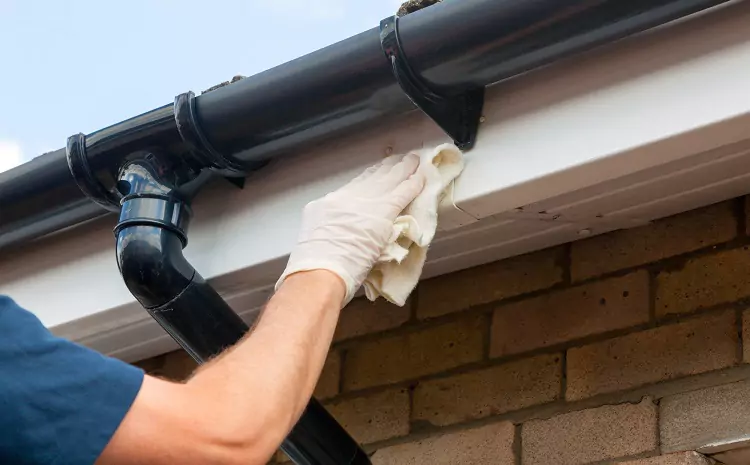If you own a home, you’re probably familiar with the sound of water rushing down the gutters and into the ground during a heavy rainstorm. It’s a sign that your gutters and downspouts are doing their job — until they aren’t. Clogs in the downspout can lead to a host of problems, including water damage, pest infestations, and even foundation issues.
Preventing a clogged gutter downspout is key for home maintenance. But, understanding their causes can be puzzling. Below, we’ll walk you through the top four culprits of downspout blockages and share strategies for keeping the water flowing freely.
1. Leaves and Debris
Downspout clogs are usually caused by a buildup of leaves, twigs, and other debris. They wash from your roof into the gutters. Over time, this debris and leaf accumulation can form a dense blockage, especially near the downspout entrance.
Regular gutter cleaning is your best defense. Plan to clean your gutters at least twice a year, with more frequent cleanings if you have overhanging trees or frequently experience heavy storms.
If you’re a DIY type, invest in a sturdy ladder and a set of gutter-cleaning tools designed to make the job easier and safer. Alternatively, hire a professional to clean your gutters — it’s a chore well worth outsourcing.
2. Dirt and Sand
Homes located near unpaved roads or with poor landscaping can find their gutters filled with sediment, dirt, and sand. Rain or wind can wash these particles into your gutters. Downspouts at low points in the gutter system are especially prone to these blockages.
Consider installing gutter guards designed to allow water into the gutter while keeping out debris. For existing clogs, you may need to disassemble part of the downspout to clear the blockage or use a plumber’s snake or high-pressure hose to push the sediment through the downspout.
3. Animal Nests
Squirrels, birds, and other critters are always looking for places to build their nests. A gutter downspout can be an inviting spot for them. Bird nests can be particularly problematic because they are often built with materials like twigs and grass that can create a solid, resilient blockage.
Prevention is key. Regularly inspect your downspouts for signs of animal activity. If you discover a nest or other evidence of animals, take measures to dissuade them from returning. This might involve installing a screen over the downspout or trimming nearby trees to reduce access.
4. Ice Dams and Freezing
In colder climates, ice dams can form in gutters when snow on the roof melts and refreezes near the eaves.
Proper insulation and ventilation in your attic can help to prevent ice dams. You can also install heating cables along the roof edge and into the gutter to keep the water flowing. Using a calcium chloride ice melt in your gutters during extreme cold can also prevent them from freezing over.
Prevent These Causes of a Clogged Gutter Downspout
A clogged gutter downspout can be a major headache, leading to costly repairs and potential safety hazards.
understand the main causes of blockages. Then, take steps to prevent them. This will keep your gutters and downspouts clear and working well. By doing so, you’ll protect your home and avoid potential issues in the long run.
So, don’t wait until it’s too late – make sure to give your gutters and downspouts the attention they deserve! Happy gutter maintenance!
Interested in learning more? Please browse through our collection of informative articles covering a wide range of topics.

Mark Thompson, a seasoned pest controller, is renowned for his expertise in keeping homes and businesses free from unwanted intruders. With a passion for environmental sustainability and a deep understanding of pest behavior, Mark has become a trusted authority in the industry.
